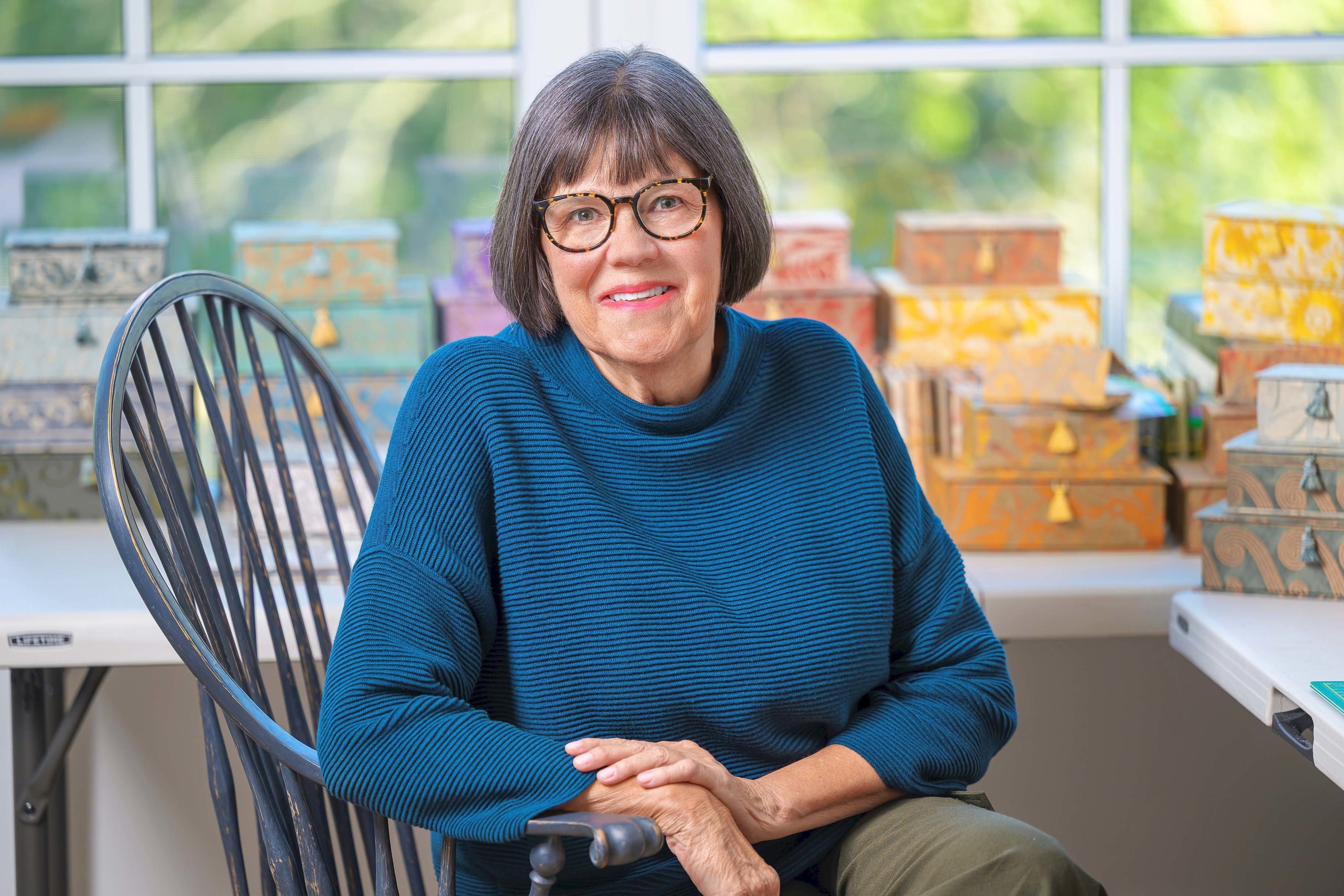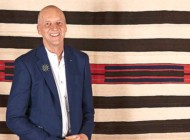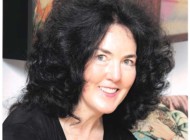
Jim Graham photo.
For this week’s interview, Antiques and The Arts Weekly sat down with Jan Whitlock, who wore many hats in the textile field but retired from being a show dealer about 15 years ago. In our conversation, she shared a bit of her backstory, a glimpse of some of the memorable moments in her career and what she’s doing these days.
You were an exhibitor at The Winter Show and other antiques shows, but prior to being an antique textiles dealer, you were a textiles designer and executive in the corporate textile world — can you tell our readers a little more about that?
I studied textile design at FIT (Fashion Institute of Technology) in New York City. At that time, I don’t think I had much of a creative side, but that blossomed once I was in school. I loved New York and being with creative people, which is still true today. I studied both print design and knitted fabric design. My first job was at Electroknit in Coney Island, and I had a wonderful experience with the owner of the company, Leon Tisch. This was before computers came into play and knit design had more to do with utilizing the machine capabilities than pure design. Sort of a math versus design approach. He challenged me to create designs by maximizing the machine.
A memorable project was creating Mickey Mouse on knitted fabrics for Disney, acknowledging that I was working within a 1½-inch design area.
I jumped to and from a few jobs, finally ending up at Dyersburg Fabrics, a Tennessee company with offices in New York. I became the perfect poster child of “The Peter Principle,” continually getting promoted into positions I would have preferred to pass. My true talent was in merchandising, but I ended up as president of Marketing, which became more a numbers and bottom line job than a creative one. On a visit to Chadds Ford, Penn., I noticed a sign on a tree, advertising a barn for rent. This is where I began my antique textile business. Having traveled overseas quite often on buying trips, I had collected a fairly large inventory on antique textiles, mostly French at that time. My shop and inventory were different than the antiques dealers nearby, and I had some success fairly quickly.
I came to the attention of Frank Gaglio of Barn Star Productions, and was invited to exhibit at the Philadelphia Pier Show, an offshoot of The Philadelphia Antiques Show. That same summer, I exhibited at Frank’s MidWeek show in New Hampshire. I advanced fairly quickly, as my offerings were mostly different than that of other dealers, and promotors were widening their audiences. This led to The Folk Art Show in New York City and then The Winter Show.
What are some of the memorable pieces you’ve handled as a dealer?
I’ve been lucky to have handled some very special textiles, concentrating on late Eighteenth and early Nineteenth Century examples, mostly American. My favorite might be an early Nineteenth Century appliqué piece, bought from textile collector Ronnie Newman. I’ve owned it twice, and yet never had it on display in my home, selling it pre-show on its first venture out, buying it back at auction and reselling it the next day.
Another favorite is an extraordinary Baltimore album quilt, now in a private collection.
I’ve been lucky to have collaborations with Grace Snyder and Titi Halle, among others. I’ve always enjoyed researching and have published books and articles related to my interests.
My items are in the collections of The Philadelphia Museum of Art, the Metropolitan Museum of Art, Colonial Williamsburg, The Boston Museum of Fine Art, The DAR Museum, The Nebraska Quilt Collection, Winterthur Museum and The Museum of Southern Decorative Arts.

Fortuny fabric-covered boxes by Jan Whitlock.
When did you officially retire from shows, and what prompted that decision?
I officially retired from shows in 2011. The market was shifting away from the merchandise I loved. It was also the year that my husband died, and he was my partner in business as well as life.
You were also an interior designer — do you still do that? Is it fair to say that textiles play an important role in the interiors you design?
I shifted into interior design as an offshoot of my antique textile business. I had sold several sets of bed hangings and had been asked to fit them to the client’s homes, which then led to draperies, upholstery, floor coverings, paint colors, etc. It was a lucky offshoot of my antique textile business. Most of my clients began working with me because of an antique textile, whether a rug, quilt, embroidered blanket, valance or even a fabric remnant.
You’re known for having a large quantity of Fortuny sample books — how has having those been significant in your post-show life?
As a lover of textiles, I have always been drawn to Fortuny fabrics. They are manufactured in the same way as they have from the start: block printed by hand, re-touching by hand, all in glorious colors and metallics and made in Venice, Italy. I bought my first sample book directly from Fortuny. It was in a storage facility that I had offered to help sort. I was then buying (or being given) old remnant pieces. This collided with Covid, when we were all huddled at home in our own small pods.
What inspired you to make boxes and notebooks covered in Fortuny fabric?
My sister and I started making lavender sachets. Then zippered pouches. Then I met a wonderful collaborator who was a cartonnage master (cartonnage being a technique of applying fabric to other items). It started with simple notebooks and evolved into all sizes of boxes, as well as jewelry made with antique passementerie by a friend in Amsterdam.
—Madelia Hickman Ring
[Editor’s note: Whitlock sells on Etsy at www.etsy.com/shop/janwhitlockinteriors.]




